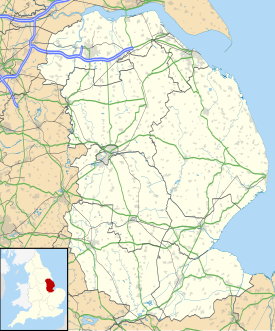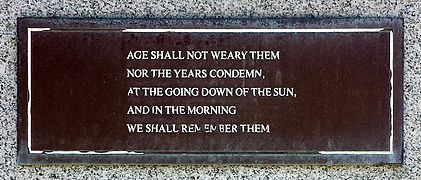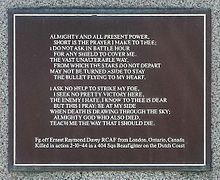RAF North Coates
| RAF North Coates | |||||||||||
|---|---|---|---|---|---|---|---|---|---|---|---|
| North Coates, East Lindsey, Lincolnshire | |||||||||||
 Aircrew and Bristol Beaufort Mk Is of No. 22 Squadron at North Coates | |||||||||||
| Coordinates | 53°29′59.3″N 0°3′57.7″E / 53.499806°N 0.066028°E | ||||||||||
| Code | NC | ||||||||||
| Site information | |||||||||||
| Operator | Royal Flying Corps Royal Air Force | ||||||||||
| Condition | Mainly returned to agricultural use; part occupied by North Coates Flying Club | ||||||||||
| Website | www | ||||||||||
| Site history | |||||||||||
| Built | 1914 | ||||||||||
| In use | 1916–1919 1926–1990 | ||||||||||
| Fate | Sold to private ownership | ||||||||||
| Battles/wars | First World War Second World War | ||||||||||
| Garrison information | |||||||||||
| Occupants | See list below | ||||||||||
| Airfield information | |||||||||||
| Identifiers | ICAO: EGYO | ||||||||||
| Elevation | 17 ft (5.2 m) AMSL | ||||||||||
| |||||||||||
RAF North Coates was a Royal Air Force station in Lincolnshire, England, six miles south-east of Cleethorpes, and close to the mouth of the Humber estuary. It was an active air station during World War I, and then again from the mid-1920s. Between 1942 and 1945, during the Second World War, it was the home of a Coastal Command Strike Wing, and from 1958 was a base for Bloodhound surface-to-air missiles, until closed in 1990.[1]
World War I
The camp at North Coates Fitties[note 1] was opened by the army in 1914 and occupied by men of the Lincolnshire Regiment. In 1916 it was converted into a forward landing ground for aircraft from the Royal Flying Corps' No. 33 (Home Defence) Squadron, based at Brattleby, and tasked with coastal patrols in North Lincolnshire. From October 1918 it was occupied by No. 248 Squadron RAF, but after the armistice the airfield was gradually run down and eventually closed in March 1919, and the land was returned to its original owner.[1]
Inter-war period
The site was reacquired in 1926 to serve as a base for aircraft using the bombing range at nearby Donna Nook, and designated No. 2 Armament Practice Camp. The station also served as a training facility for observers and air gunners from 1936 up until the beginning of World War II.[1]
World War II
Following the declaration of war on 3 September 1939, the training units were transferred elsewhere, and No. 2 Recruit Training Pool was formed at the airfield, followed by the Ground Defence Gunnery School in November. In February 1940 the station was transferred to No. 16 Group, Coastal Command, and was first occupied by No.'s 235, 236 and 248 Squadrons, flying the Blenheim in both bomber and long-range fighter variants, until April 1940. North Coates was then occupied by a number of Coastal Command squadrons over the next two years, mostly RAF, but including Fleet Air Arm and Royal Canadian Air Force units, flying a variety of aircraft, mainly Beaufort and Hudson light bombers, but also Hampden and Swordfish torpedo bombers, Avro Anson reconnaissance aircraft and Maryland light bombers.[1]
North Coates Strike Wing

In September 1942 it became the base for the North Coates Strike Wing[1] formed from No.'s 143, 236 and 254 Squadrons, flying the Beaufighter in the heavy fighter, bomber, and "Torbeau" torpedo bomber variants, tasked with attacking enemy shipping in the North Sea.[2] The first operation of the Strike Wing took place on 20 November 1942 when Beaufighters from No's. 236 and 254 Squadrons took off to attack a convoy of twelve to sixteen ships heading towards Rotterdam. The weather was poor, the squadrons lost contact with each other, and the convoy was protected by Fw 190 fighters. As a result, only three enemy ships were damaged, but three Beaufighters were shot down and four so badly damaged that they crashed or made forced landings.[3] The Strike Wing was promptly withdrawn from service for intensive training,[2] during which time, between November 1942 and early 1943, the east-west concrete runway was laid.[1]
It was not until 18 April 1943 that the Wing launched its second operation, when nine "Torbeaus" of No. 254 Squadron, six Beaufighter bombers of No. 236 Squadron, and six Beaufighter heavy fighters of No. 143 Squadron, with Spitfires and Mustangs providing air cover, attacked a heavily escorted convoy off the Dutch coast. While the Beaufighters attacked the escort vessels with bombs, machine gun and cannon fire, the "Torbeaus" attacked the largest merchant vessel. In the attack two Template:Sclass2-s were set on fire, and an armed trawler was also damaged. Two confirmed torpedo strikes were made on the merchant vessel, which was left listing and on fire. The co-ordinated attack lasted only 15 minutes, and only slight damage was sustained by two or three aircraft. Another operation at the end of the month resulted in the sinking of two merchant vessels and a trawler, with damage to several escort ships, for the loss of one Beaufighter.[3] In June the Strike Wing began to utilize the RP-3 rocket projectile, and by the middle of the year had, along with the minelayers of Bomber Command and the Royal Navy's Nore Flotilla, rendered the Port of Rotterdam almost unusable. Ship captains bringing in iron ore from Sweden began to demand bonuses of up to 300 per cent for risking their ships. By the end of the year the Strike Wing had sunk thirteen ships totalling 34,076 gross tons,[2] and by the end of the war in May 1945 had sunk over 150,000 tons of shipping,[4] as well as two U-boats; U-418 in the Bay of Biscay on 1 June 1943, and U-2338 off the Danish coast on 5 May 1945.[5] They had also lost 120 aircraft and 241 aircrew.[4]
- The RAF North Coates Strike Wing War Memorial in Cleethorpes
-
The memorial
-
Plaque on front
-
Plaque on left side
-
Plaque on back
-
Plaque on right side
Post-war
North Coates was closed in August 1946 and transferred to Maintenance Command, becoming a storage site for No. 25 Maintenance Unit, and was then transferred to No. 61 Maintenance Unit in October. In December 1946 the station was transferred to Flying Training Command, and in January 1947 became No. 1 Initial Training School. However the airfield’s isolation during the severe winter of 1947 meant that the Officer Cadets were soon relocated.[1]
In May 1948 it was transferred to No. 24 Group, Technical Training Command, and became the location of the School of Explosives Inspection and also No. 5131 (Bomb Disposal) Squadron. In January 1953 the airfield again fell victim to the weather, being overwhelmed during the North Sea flood and was temporarily abandoned when flooded to a depth of 3 feet (0.91 m). In August 1953 the station became the home of No. 54 Maintenance Unit, tasked with breaking up redundant and crashed aircraft for spare parts, coming under No. 43 Group, Maintenance Command, in December 1954. Between February 1955 and October 1957 North Coates was the base of "B" Flight, No. 275 (Air Sea Rescue) Squadron flying Bristol Sycamore HR.14. helicopters.[1]

In April 1956 the airfield was selected as the site of the RAF's first Surface to Air Guided Weapons base, housing forty-eight Bloodhound surface-to-air missiles. In July 1956 work began on the construction of the missile facility, including missile pads, Tactical Control Centre, Missile Repair Section, and Servicing Hangar. In October 1957 No. 17 Joint Services Trials Unit was formed there to carry out operational trials of the Bloodhound Mk. II. The Bloodhounds remained at North Coates until mid-1990, and the station was finally closed in December, and the site transferred to the Defence Land Agency for disposal.[1]
In April 1992 the entire airfield, technical and domestic site including the NCO and officers married quarters were sold to Roger Byron-Collins' Welbeck Estate Group. Over the ensuing 8 years the individual houses were sold and new uses were found for a variety of buildings including the Station HQ, Officers and Junior ranks messes, accommodation blocks, NAAFI and church. The airfield and related land were sold in 1999 to local farmer George Henry Parker who returned the majority of the airfield back to agriculture and demolished many ancillary buildings relating to the airfield. The concrete runway, hard standings and the taxiways were removed.[6] One hangar is still used by the North Coates Flying Club, who laid a grass airstrip alongside the line of the old runway.[1]
In May 2020, a wreck believed to be Beaufighter JM333 of No. 254 Squadron was uncovered by shifting sands on Cleethorpes beach near Grimsby. The aircraft was ditched on April 21, 1944 shortly after takeoff from North Coates when both engines failed. The crew survived uninjured.[7]
Squadrons
| Dates | Name | Notes |
|---|---|---|
| 1914 – 1916 | Lincolnshire Regiment | |
| 1916 – September 1918 | No. 33 Squadron RFC/RAF | Royal Aircraft Factory B.E.2. |
| October 1918 – March 1919 | No. 248 Squadron RAF | Airco DH.6, Sopwith Baby and Sopwith Tabloid. |
| Closed March 1919 – 1926 | ||
| February 1927 – October 1936 | No. 2 Armament Practice Camp | Renamed No. 2 Armament Training Camp in December 1932. |
| January 1936 – 2 September 1939 | Air Observers School | Renamed No. 2 Air Armaments School on 1 November 1937, and then No. 1 Air Observers School on 1 March 1938. |
| 1934 – July 1945 | North Coates Station Flight | Fairey Gordon and Westland Wallace, and a Fairey IIIF, Miles Magister M.14A, Avro Tutor and de Havilland DH.60 Gypsy Moth. |
| 9 April 1938 – 7 May 1938 | No. 144 Squadron RAF | Bristol Blenheim Mk I. |
| September 1939 – June 1940 | No. 2 Recruit Training Pool | |
| December 1939 – June 1940 | Ground Defence Gunnery School | Westland Wallace, Hawker Hart and Gloster Gauntlet. |
| January 1940 – August 1940 | Detachment, No. 611 Squadron RAF | Supermarine Spitfire Mk I. |
| February 1940 – April 1940 | No. 248 Squadron RAF | Bristol Blenheim IVF. |
| February 1940 – April 1940 | No. 235 Squadron RAF | Bristol Blenheim Mk IA & IVF. |
| February 1940 – April 1940 | No. 236 Squadron RAF | Bristol Blenheim Mk IA & IVF. |
| April 1940 – June 1941 | No. 22 Squadron RAF | Bristol Beaufort Mk I, Avro Anson Mk I and Martin Maryland. |
| May 1940 – March 1941 | 812 Naval Air Squadron | Fairey Swordfish. |
| August 1940 – February 1941 | Detachment, No. 616 Squadron RAF | Supermarine Spitfire Mk I. |
| March 1941 – May 1941 | 816 Naval Air Squadron | Fairey Swordfish. |
| May 1941 – December 1941 | No. 86 Squadron RAF | Bristol Beaufort Mk I. |
| June 1941 | No. 6 Anti Aircraft Co-operation Unit | de Havilland DH.87 Leopard Moth and Westland Lysander. |
| July 1941 – February 1942 | No. 407 Squadron RCAF | Lockheed Hudson Mk V. |
| November 1941 – January 1943 | "D" Flight, No. 278 Squadron RAF | Westland Lysander and Boulton Paul Defiant ASR Mk. 1. |
| January 1942 – August 1942 | No. 59 Squadron RAF | Lockheed Hudson Mk V and two Consolidated B-24 Liberator Mk III. |
| January 1942 – May 1942 | No. 53 Squadron RAF | Lockheed Hudson Mk I & V. |
| February – March 1942 | 776 Naval Air Squadron | Blackburn Roc. |
| February 1942 – November 1943 | No. 7 Anti Aircraft Co-operation Unit | Westland Lysander, Miles Master, de Havilland DH.85 Leopard Moth, and an Airspeed Oxford. |
| April – May 1942 | No. 42 Squadron RAF | Bristol Beaufort Mk I. |
| June – August 1942 | No. 415 Squadron RCAF | Handley Page Hampden TB Mk I. |
| August 1942 – August 1943 | No. 143 Squadron RAF | Bristol Blenheim Mk IV and Bristol Beaufighter Mk IIF. |
| September 1942 – October 1942 | Detachment, No. 608 Squadron RAF | Lockheed Hudson Mk V. |
| September 1942 – May 1945 | No. 236 Squadron RAF | Bristol Beaufighter. |
| November 1942 – June 1945 | No. 254 Squadron RAF | Bristol Beaufighter, de Havilland Mosquito Mk XVIII, a Bristol Beaufort and an Avro Anson. |
| January – March 1944 | No. 415 Squadron RCAF | Vickers Wellington XIII. |
| February – May, & September 1944 | No. 143 Squadron RAF | Bristol Beaufighter, a Bristol Blenheim and a de Havilland Mosquito. |
| September – October 1945 | No. 25 Maintenance Unit | |
| October 1945 – December 1946 | No. 61 Maintenance Unit | |
| January – October 1947 | No. 1 Initial Training School | |
| May 1948 – August 1953 | School of Explosives Inspection | |
| July 1948 – August 1953 | No. 5131 (Bomb Disposal) Squadron | |
| August 1953 – July 1956 | No. 54 Maintenance Unit | |
| Mid-1954 – June 1990 | RAF North Coates Station Flight | Avro Anson. |
| November 1954 – October 1957 | "B" Flight, No. 275 (Air Sea Rescue) Squadron RAF | Bristol Sycamore HR.14. |
| December 1958 – November 1962 | No. 264 Squadron RAF | Bristol Bloodhound Mk I. |
| February 1962 – December 1966 | No. 17 Joint Services Trials Unit | Bristol Bloodhound Mk II.[8] |
| February 1963 – April 1964 | No. 148 (SAM) Service Wing | Bristol Bloodhound Mk I. |
| October 1963 – January 1971 | No. 25 Squadron RAF | Bristol Bloodhound Mk I, converted to Mk II in 1964.[9] |
| October 1963 – August 1964 | Surface to Air Missile Operational Training School | Bristol Bloodhound Mk II. Absorbed into No. 25 Squadron RAF. |
| March 1976 – April 1990 | "B" Flight, No. 85 Squadron RAF | Bristol Bloodhound Mk II. |
| April 1987 – June 1990 | Bloodhound Missile System Maintenance School | Bristol Bloodhound Mk II. |
See also
Notes
- ^ The word "Fitties" is derived from an Old English term meaning salt marsh.
References
- ^ a b c d e f g h i j k Stafford, Brian (2015). "North Coates Airfield History". Bomber County Aviation Resource. Retrieved 4 September 2015.
- ^ a b c Saunders, Hilary St. George (1954). "III: Stratagems and Spoils". Royal Air Force 1939-1945: Volume III: The Fight Is Won. London: Her Majesty's Stationery Office. pp. 69–71. Retrieved 4 September 2015.
- ^ a b Saunders, Hilary St. George & Richards, Denis (1954). "VI: Coastal Command and the Struggle at Sea: The Offensive against German Shipping and U-Boats in 1942". The Royal Air Force 1939-1945: Volume II: The Fight Avails. London: Her Majesty's Stationery Office. pp. 96–99. Retrieved 4 September 2015.
- ^ a b "RAF Memorial, Cleethorpes, Lincolnshire". Roll of Honour. 2014. Retrieved 4 September 2015.
- ^ Rickard, John (2015). "No. 236 Squadron (RAF) during the Second World War". historyofwar.org. Retrieved 4 September 2015.
- ^ twsg.co.uk
- ^ "Hidden Wreck of RAF Fighter Emerges from Sands on Cleethorpes Beach". Grimsby Live, 28 May 2020. Retrieved: 1 June 2020.
- ^ "17 JSTU". Bloodhound MKII. 2013. Retrieved 4 September 2015.
- ^ "25 Squadron". Bloodhound MKII. 2013. Retrieved 4 September 2015.
Further reading
- Goulter, Christina J. M. (June 1995). A Forgotten Offensive: Royal Air Force Coastal Command's Anti-Shipping Campaign 1940-1945. Routledge. ISBN 978-0714641478.
- Halpenny, Bruce Barrymore (April 1981). Action Stations: 2. Military Airfields of Lincolnshire and the East Midlands. Patrick Stephens Ltd. ISBN 0850594847.
- Otter, Patrick (1996). Lincolnshire Airfields in the Second World War. Countryside Books. ISBN 9781853064241.
External links
- "North Coates XCOA Lincolnshire". Airfield Cards. 2015. Retrieved 4 September 2015.
- "North Coates". Abandoned, Forgotten & Little-Known Airfields in Europe. 2015. Retrieved 4 September 2015.
- "Officers Commanding, RAF North Coates". Air of Authority – A History of RAF Organisation. 2015. Retrieved 4 September 2015.
- "RAF North Coates". Royal Air Force and Airfield History in Lincolnshire. 2014. Retrieved 4 September 2015.
- "North Coates". Aviation Heritage Trail. 2015. Retrieved 4 September 2015.
- "Duke of Edinburgh Visits R.A.F. Airfield North Coates". British Pathé. 1958. Retrieved 4 September 2015.
- "RAF get 'Bloodhound' missiles". British Pathé. 1958. Retrieved 4 September 2015.






